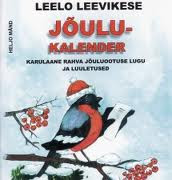 Eesti lapsed tunnevad toredat lindu Leelo Leevikest (bullfinch) Heljo Männa raamatust. Kanada lapsed seda tegelast ei tunne, sest leevikesed elavad ainult Euroopas ja Aasias.
Eesti lapsed tunnevad toredat lindu Leelo Leevikest (bullfinch) Heljo Männa raamatust. Kanada lapsed seda tegelast ei tunne, sest leevikesed elavad ainult Euroopas ja Aasias.Leevike on lumiste aedade lind, kellel must-hallid tiivad ja punane rind. Jaanuarikuus tulevad kuuse metsadest välja koos põhjamaa sõpradega, kes lendavad Eestisse veel külmemalt maalt. Emad kui ka isad laulavad kenasti; emad veel valjumeni!
Leevikest on kerge Eestis toimuvale aialinnuvaatlusele meelitada. Puista umbrohuseemneid ja nad on kohe kohal! Praegu on nende parim vaatlemisaeg, kuna märts-aprillis lendavad tagasi metsa või põhjamaale tagasi.
Möödunud aastal jälgis üle tuhande linnuhuvilise üle Eesti kokku 37,046 lindu vähemalt 62 liigist. All nimekirjas on Eesti ja Euroopa Talve 2010 aialinnuvaatluse tulemused.
Määramise lehelt leiat ka teisi linde - nende ingliskeelsed nimetused (mitte kõik) on SIIN otsimistabelis.
Missugune on Sinu meelest kõige ilusam lind?
| Joonistused: Mike Langman, Eesti Ornitoloogiaühingu võrgulehest |







